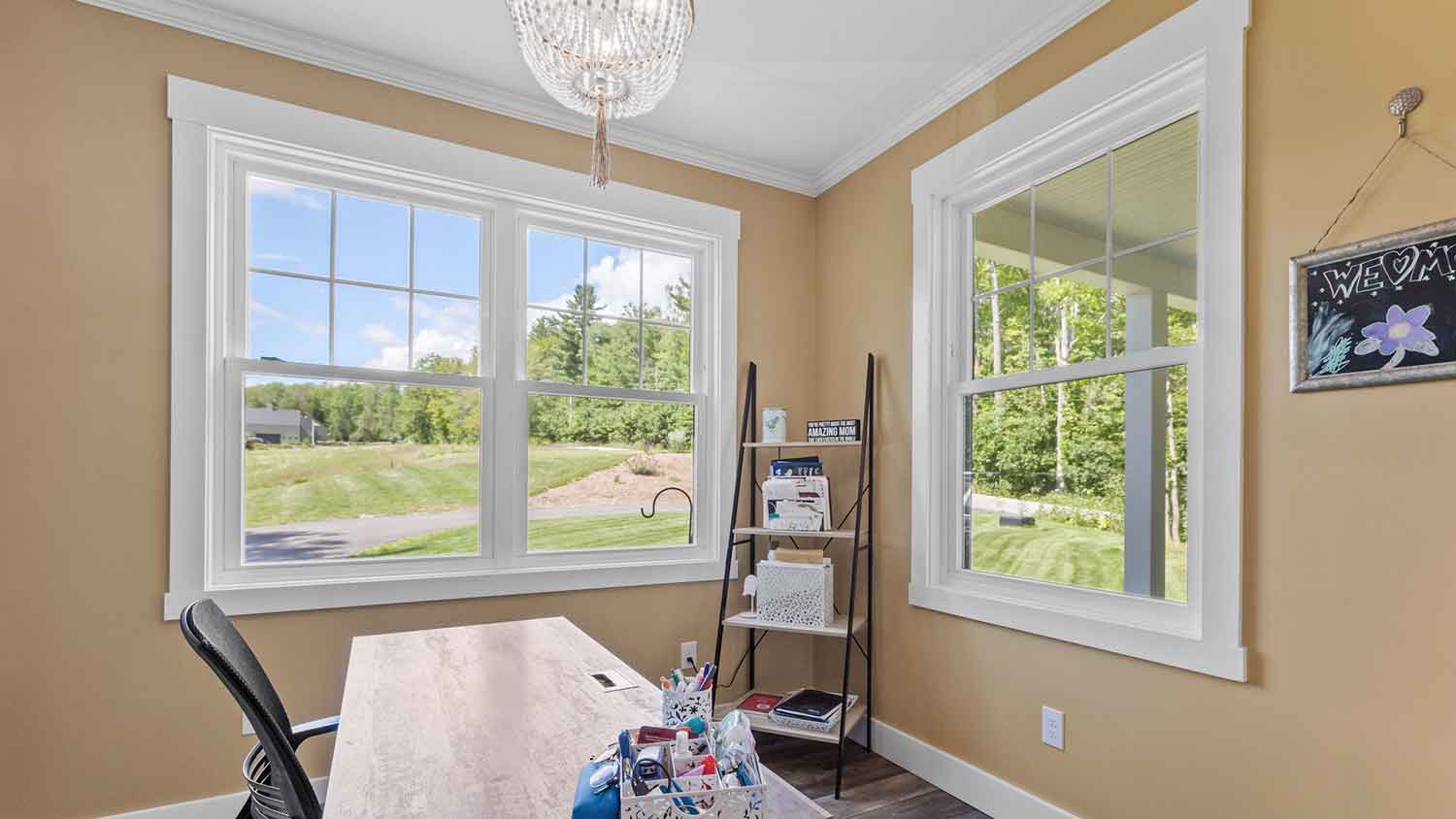
Learn how much triple-pane windows cost, exploring common cost factors such as their size, type, location in your home, and design.
Mull over the pros and cons of mulled windows before buying


Mulled windows provide a more cohesive and inviting look for your home’s exterior.
Installers can retroactively add window mulling or install mulled windows as replacements.
Mulled windows can add more value to your home than separate windows.
Mulled windows introduce more natural light and ventilation but often come at a higher cost due to their larger size.
Installing new windows in your home can add a lot of value, but choosing between different frame materials, glass types, and protective coatings can get complicated quickly. To add even more decisions to the mix, you can either install mulled windows or separate windows, each of which has pros and cons. In this article, we’ll explain what mulled windows are and help you decide if they’re the best choice for your property.
Window mulling is the process of joining two or more windows together at the seams to create a larger, more open window. Window mulling involves creating a window opening that will fit all of the windows, adding structural reinforcements between them, installing the windows, and trimming around the entire opening to create the illusion of a large, single window.
Mulled windows provide a few key benefits over separate windows:
More cohesive appearance: Mulled windows create the illusion of a single, large window in your wall. This improves your home’s curb appeal and creates a more inviting appearance.
More natural light in your living space: Compared to separate, smaller windows, mulled windows let more natural light into your living area, creating a brighter and more inviting interior. It can also mean lower electric bills if the sunlight prevents you from relying on electricity for lighting.
More customizability: Without mulling or paying more for fully custom windows, you’ll be limited to specific window sizes and shapes. Mulling allows you to combine different windows for a custom look without the custom price tag.
Improved views of the outdoors: Mulled windows don’t have solid exterior walls between them that block views of the outdoors. You’ll often enjoy a more open view of nature from your living space with mulled windows.
Of course, mulled windows aren’t ideal for every home or homeowner. Below are some drawbacks of mulled windows that you should consider before deciding:
Higher installation cost: Mulled windows cost more than installing separate windows because the process is more complicated. You might also need to pay extra to enhance the structural stability of the surrounding wall, depending on the size of your mulled windows and the structural load above them.
Can be difficult to clean: Mulled windows stacked on top of each other—as in the case of a transom window over a standard window—can be more difficult to reach for proper window cleaning. This is especially true if your window placement is on the second floor or if the windows don’t open for cleaning access from the interior.
Potentially higher maintenance costs: If your window manufacturer makes your mulled windows in the factory, any damage to one window might require a full replacement, which would be more time-consuming and expensive than replacing a single window.
Can be less structurally sound: There are limits to how many windows you can mull together, often imposed by local building codes or structural limitations. Exterior walls are load-bearing, so you might need additional support to maintain stability.

One of the upsides of mulled windows is the flexibility you have in the design. There are a few common types of window mulling that give you more design choices than separate windows.
Twin mulled window: A twin mulled window consists of two standard windows joined at the sides. Most homeowners choose from single, double, picture, or casement windows.
Triple mulled window: Triple mulled windows are similar, with three windows joined side by side. The middle window can be a different style than the outside two for customization. A common option is a picture window in the middle and windows with moveable sashes on the sides. The middle window can also be wider than those on the outside.
Round-over mulled window: A round-over mulled window consists of an arched window with the bottom joined to the top of another window style. This provides a classic appearance in line with Roman, Victorian, and Neoclassical designs. The top round window can span over one or more bottom windows and can also be mulled.
Transom-over mulled window: A transom-over mulled window is similar to a round-over mulled window, but the top window is rectangular rather than arched, providing a more modern appearance.
Trapezoid-over mulled window: A trapezoid-over mulled window is similar to a round-over design, with the difference being that the top window is trapezoidal. This style is more post-modern, but you can use it to create large Adirondack windows to fit a more rustic appearance.
Window mulling works in one of two ways, depending on your design preferences, budget, and space constraints:
Prefabricated mulled windows: Most window manufacturers offer prefabricated mulled windows, which they build and join together in the factory. Your window installer will install the large window as a single unit. This is the most affordable option.
Mulled windows built on-site: A professional window company near you can also purchase individual windows and join them together as they install them. This is more time-consuming and often more expensive, but depending on the manufacturer you choose, it gives you more flexibility in the design.
From average costs to expert advice, get all the answers you need to get your job done.

Learn how much triple-pane windows cost, exploring common cost factors such as their size, type, location in your home, and design.

Bigger windows mean more natural light in your space and better views of the outdoors. Learn about the cost to enlarge windows and what affects your total.

Restoring old windows is a great way to improve the appearance of your home. Costs vary depending on the age of the windows, the number you are restoring, and the window’s material.

Do windows with broken seals need to be replaced? We’ll walk you through when to repair broken window seals and when to replace the windows wholesale.

If you’re looking to upgrade your window frames, you’ll find there are many options. Here’s what you need to know about window frame types and materials.

Need to replace your windows but not sure you want to keep the same dimensions? Learn about standard casement window sizes and how to fit windows to your space.